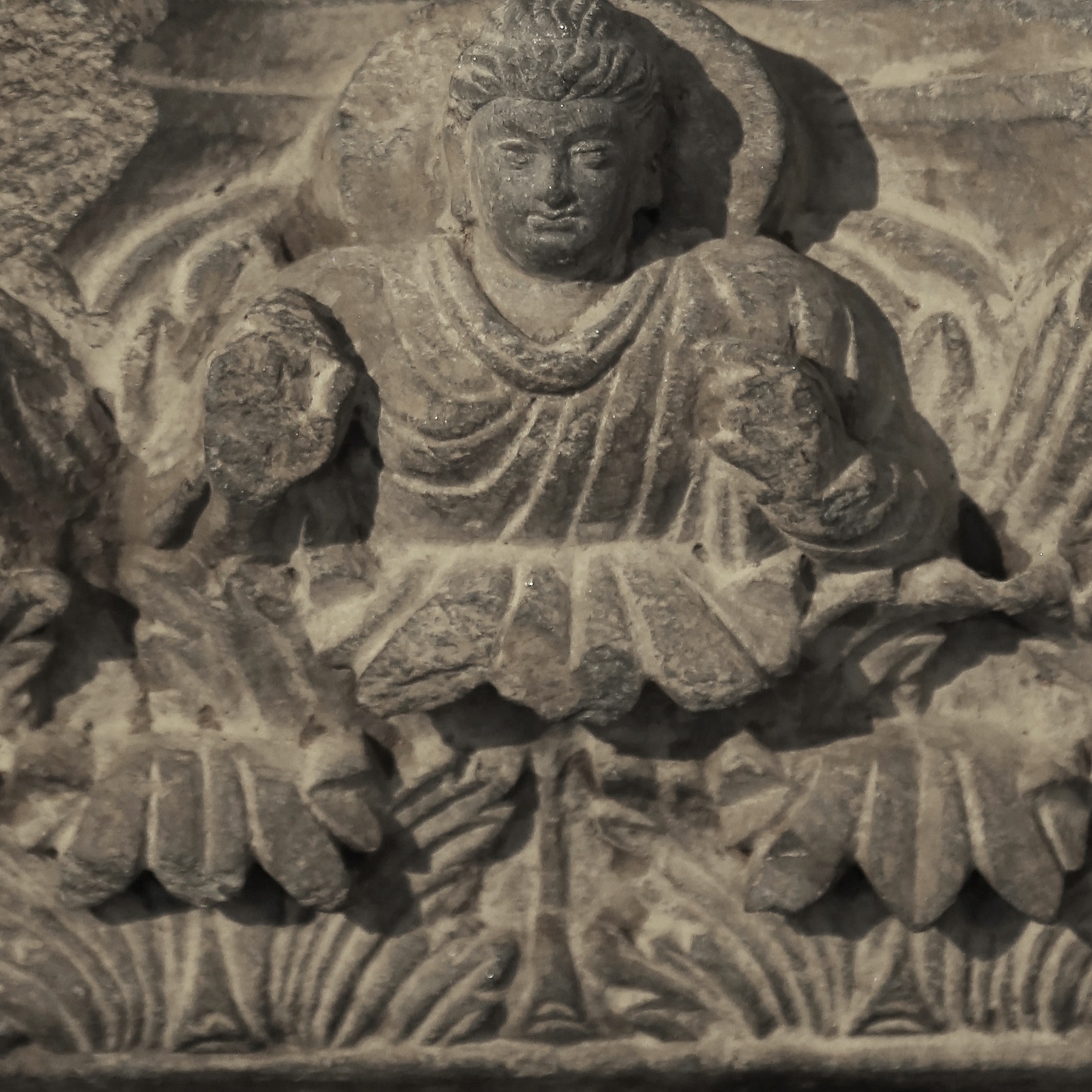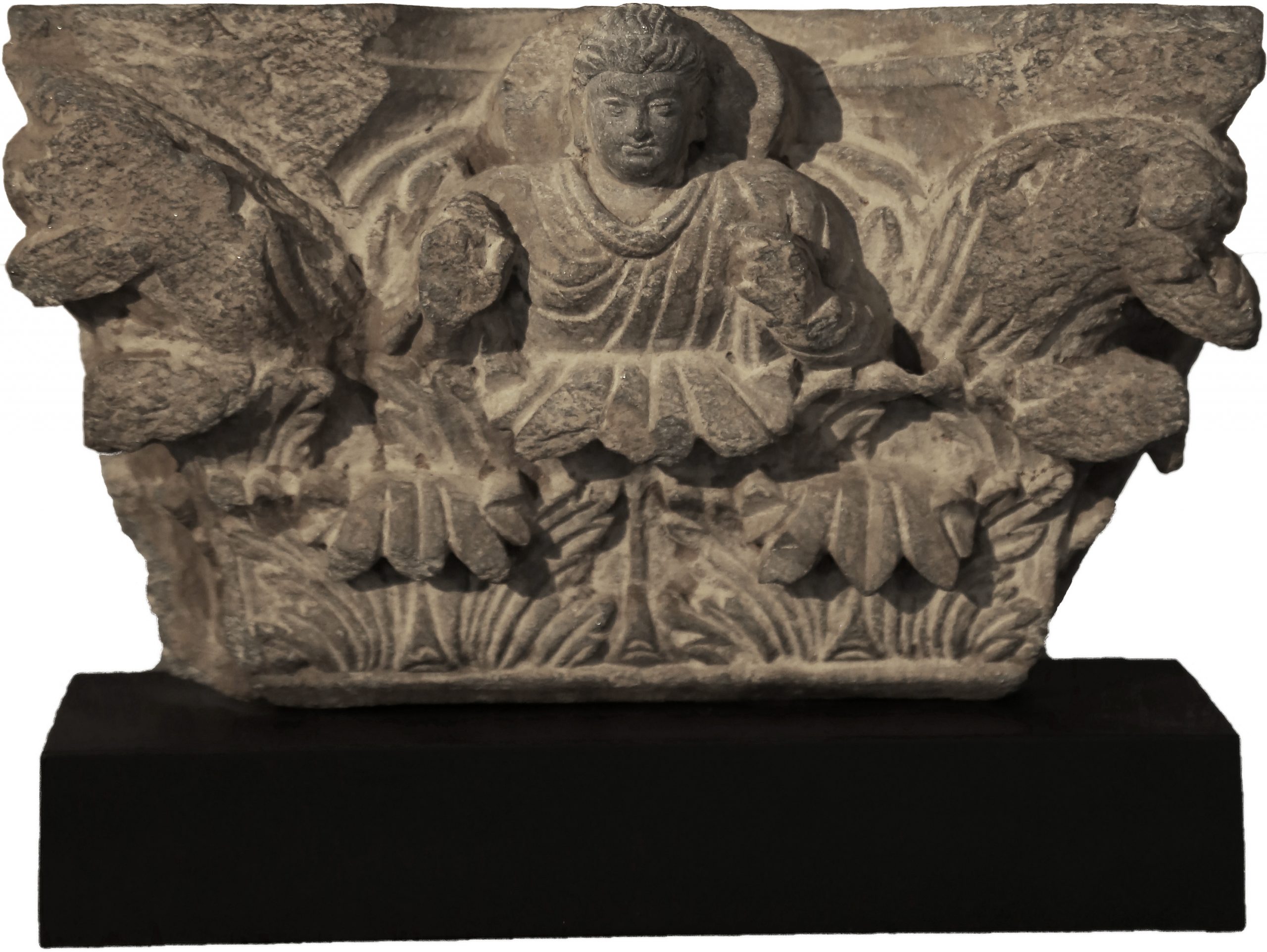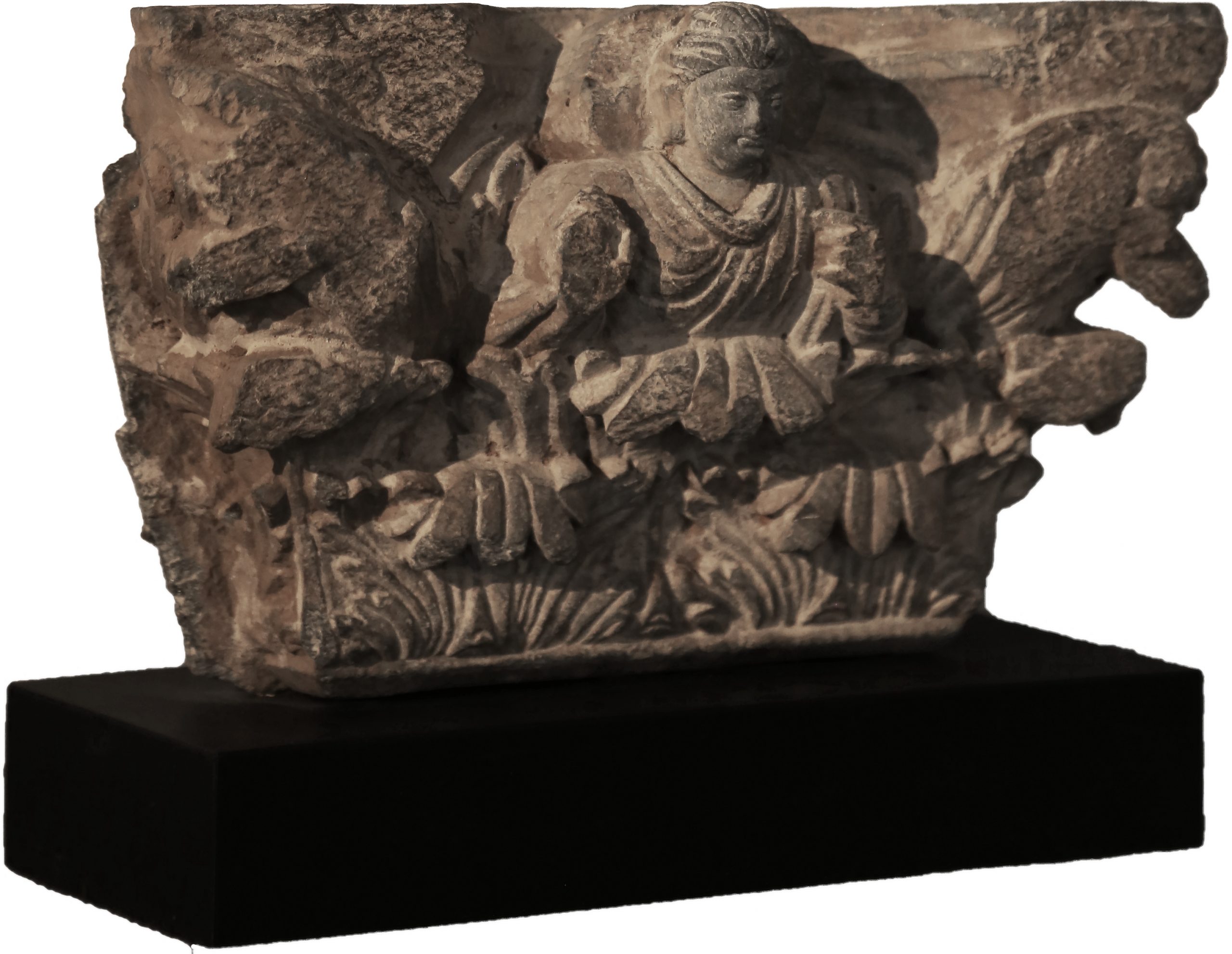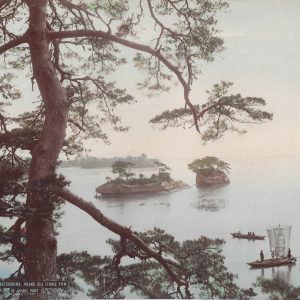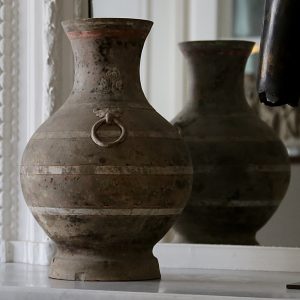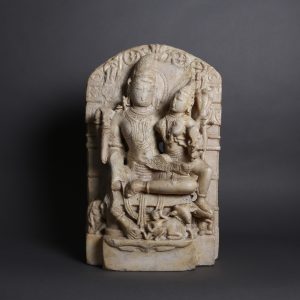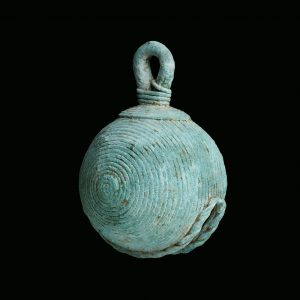Capital
Schist
Ancient province of Gandhāra
2nd-3rd century
H. 15 cm or 5 ⅞ in
Description
This fragment of a capital is a charming and quite characteristic piece of that Gandhāra art which is often called Greco-Buddhist art. It is indeed a superb illustration of the close relationship that this original Buddhist art has with ancient Western art. It combines with great finesse and naturalness the Greek acanthus leaf motif with an image of the appeasing Buddha.
The Blessed One is unmistakably recognizable by the uṣṇīṣa, the cranial protuberance that is the essential sign of his Enlightenment, and a large halo behind his head confirms his transcendental character. He is also identified by his broad monastic garment, elegantly draped around his body in the manner of a Roman toga, covering both shoulders and falling in soft folds. Buddha is depicted as spontaneously rising out of acanthus leaves that constitute the rest of the decoration.
All around the Buddha, the capital is decorated with an extremely refined vegetal decoration. The acanthus leaf motifs first appear in low relief, multiplying the incisions that accentuate their graphic aspect. The vegetal ornament finally unfolds into a leaf sculpted in high relief and ending in a graceful scroll.
This beautiful Hellenistic-influenced architectural piece would have topped a pilaster used to frame a niche in which a Buddha or a bodhisattva would have stood. Such architectural elements are found in miniature on the numerous Gandhārian reliefs, separating the different scenes and structuring the sculpted surface.
Provenance: Private collection, USA, acquired in New York by the late 1990s.

